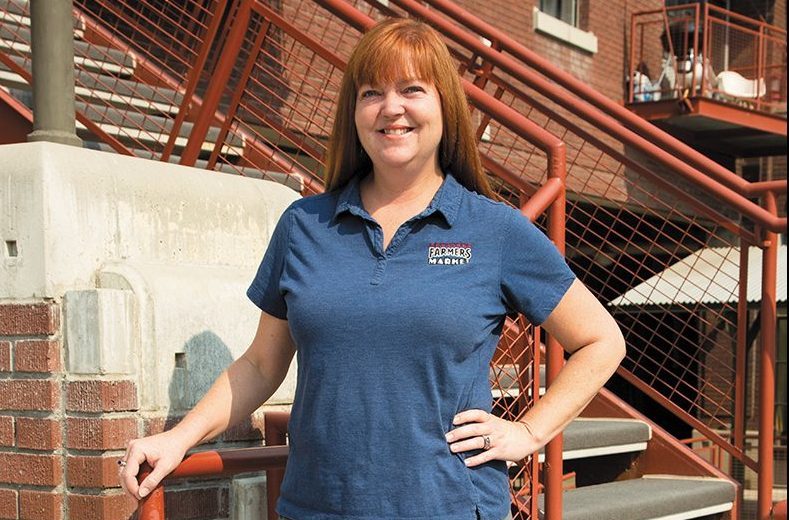
Making Meaning in What You’re Eating: Eat Local Week
Food Festivals & Events
Alison Einerson was an early cultivator of Utah’s strongly sprouting Eat Local program, with a mission to make local food a sustained extension of the larger cultural and personal narrative. As Eat Local has grown, along with her and her cohort. “I started out as a coordinator of the program, and I am now the Executive Director of Urban Food Connections of Utah, so my role has definitely changed!” she says. Change is the fulcrum of Eat Local Week, the central, yearly event of the program. The early mission of Eat Local was statewide awareness about sustainability and ethical consumption, support of local food purveyors, community education, and motivating long-term support of those values and contributors. “We started out as a collaboration of three nonprofits: Wasatch Community Gardens, Downtown Farmers Market and Slow Food Utah,” says Einerson. “Since then, we’ve added dozens of new partners across the state: farmers markets in St. George, Utah County, Cache Valley and Moab and many [participating] organizations.”
Since we last spoke with Eat Local in 2015, Urban Food Connections of Utah has absorbed management and streamlined the collaboration process with Eat Local’s partnering organizations. “We’re looking to increase our visibility and outreach statewide, and make sure there are events that can engage everyone in the challenge and the mission of Eat Local Week,” Einerson says. “We’re also trying to hold events throughout the year so that the mission of eating locally stays first in mind all year long.” Change and growth are difficult, critical, cohabiting forces. Amid the apparent growth of the program, there have been a few inevitable snags. Einerson explains that the largest obstacle lies in enhancing the awareness “of how much food is grown and produced across the state, and how much economic impact we can have if we all commit to making a few simple changes in our diets and our shopping habits,” she says. “Buying a local tomato doesn’t just benefit the eater; it also represents significant economic impact for the farmer, and that ripples out to that community and even helps farmers stay on their land!” Within their consciousness-raising vision lies a larger social and environmental imperative for Einerson and her Eat Local co-facilitators. “It’s a political act—what you eat has real impact in many ways,” she says. “We are talking more about climate change and how that impacts our food systems and about how what you eat can be a radical act.”
This year’s Eat Local Week will be an all-the-richer cornucopia of events throughout the state, including a large kickoff party at Harmon’s City Creek. Regarding the fresh additions to this year’s lineup, “We have a new event this year in partnership with KRCL called the Punk Rock Farm to Taco Party, which is going to be incredible!” Einserson says. “Delicious tacos prepared by local chefs and live punk … What could be better? We also have a movie screening, a few pickling events, and we end with our Fermentation Festival at the Downtown Farmers Market.” In addition to the tasty display of events through the week, locals are encouraged to take part in the Eat Local Challenge. “The week is really all about getting people to take the challenge,” she says. “Commit to eating food from a 250-mile radius, then do the best you can! We encourage people to come up with a challenge that works for them, and stick to it for a week.” Locals are encouraged to craft their own personal challenge to practice, be it only eating local meats or buying a week’s worth of fresh produce at the farmers’ market, etc. This digestible dare is a small yet substantial entrée into changing our immediate and long-term relationship with food and local food culture, a mission that Eat Local hopes will stick like a delicious Utah wildflower honey.
Beyond a wild week of toothsome delights and edible workshops, Eat Local seeks to show Utahns how to continue the challenge into the coming seasonal changes. “One great way to continue to eat locally during the winter months is to come to the Rio Grande Winter Market,” Einerson says. “We host a farmers’ market every Saturday from November through April, and we have fresh produce all winter long! You can also shop locally at stores like Harmons Grocers, who really do focus on buying as many locally sourced products as they can.”
It’s unmistakable that the seeds of Eat Local are rooting into a garden of transformation and a shift of perspective for Utah consumers and creators. As Anthony Bourdain said, “Food is everything we are. It’s an extension of nationalist feeling, ethnic feeling, your personal history, your province, your region, your tribe, your grandma.”
As the cultivation continues, I inquire about what’s on the horizon for Eat Local. Einerson says with a chuckle, “Let’s focus on growing our participation for this year, and we’ll talk about that later! Deal?” I can happily agree. In a changing culture of local food systems, that sounds like a delectable deal.
Eat Local Week kicks off Sept. 8 and runs through Sept. 15 in multiple locations. For more information, visit eatlocalweek.org, and follow Eat Local on Facebook at facebook.com/eatlocalweekutah.